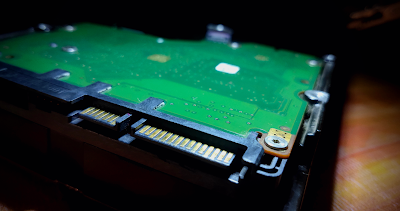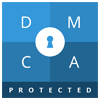Recover data from the damaged hard dish is a little sad thing. Because Your important files are in a high-risk position. So it’s normal to be worried. So today in this blog we will learn about how to recover your data from your damaged hard disk or SSD. Before that let us know about the hard drive. If you know about it then you can skip to “How to recover your data”.
What is a hard disk?
A hard drive (HDD) or hard drive is an electromechanical data storage device that stores and retrieves digital data using magnetic storage and one or more solid pieces around it immediately fitted with magnetic objects. The vessels are equipped with magnetic heads, usually arranged in the arm of a moving actuator, which reads and records details in clay parts. Data is accessed through random login, which means that individual data blocks can be stored and accessed in any order. HDDs are a type of fixed storage, which stores stored or deleted data. Modern HDDs are typical of the shape of a small rectangular box.
Introduced by IBM in 1956, HDDs were the second and second most common computer tool for general purpose in the early 1960s. HDDs maintain this position in the modern era of personal servers and computers, although personal computer devices are produced in large volumes, such as cell phones and tablets, depending on flash memory storage devices. More than 224 companies have historically produced HDDs, although after several industry mergers many units are produced by Seagate, Toshiba, and Western Digital. HDDs control the volume of generated storage (exabytes per year) on servers. Although production is growing slowly (with exabyte deployment, sales revenue and unit deployments are declining because solid-state drives (SSDs) have higher data transfer rates, areal storage height, better reliability, and lower latency and access times.
Revenue for SSDs, most of which use NAND flash memory, is slightly higher than for HDDs. Flash storage products have more than double the hard disk drive revenue since 2017. install HDDs in applications where speed, power consumption, small size, high power, and durability are important. The individual costs of SSDs are declining, and the price of HDDs has decreased.
The main features of the HDD are its power and performance. Specified power in unit units corresponding to 1000 power: 1-terabyte (TB) drive has a capacity of 1,000 gigabytes (GB; of which 1 gigabyte = 1 billion (109) byte). Often, some HDD capabilities are not available to the user because they are used by the file system and computer application, and there may be built-in debugging and debugging. Also, there is confusion as to the amount of storage as power is expressed in decimal gigabytes (1000 capacity) by HDD manufacturers, while the most widely used operating systems report 1024 power capacity, resulting in a smaller number than advertised. Performance is determined by the time required to move the heads to the track or cylinder (access point) to add the time it takes for the desired field to move under the head (average latency, which is the function of physical rotation speed per minute), and finally the speed at which data is transmitted (data rate). The two most common features of today's HDDs are 3.5-inch, desktop computers, and 2.5-inch, especially laptops. HDDs are connected to systems via standard interface cables such as PATA (Parallel ATA), SATA (Serial ATA), USB, or SAS (Serial Attached SCSI) cables.
The first product of IBM hard disk drive, 350 disk storage, was launched in 1957 as part of the IBM 305 RAMAC program. It was about the size of two medium-sized refrigerators and was stored for five to six million-bit (3.75 megabytes) characters in a 52-disc (100-used space) stack. The 350 had one arm with two reading/writing heads, one facing up and the other down, which moved both horizontally between the adjacent layers and upwards from two layers to the second set. The IBM 350 variants were IBM 355, IBM 7300, and IBM 1405.
In 1961 IBM announced, and in 1962 it launched, the IBM 1301 disk unit, which replaced the IBM 350 and other similar drives. 1301 consisted of one or two modules (Model 1) or two (model 2), each containing 25 placards, each container about 1⁄8-inch (3.2 mm) in diameter and 24 inches (610 mm) wide. While the previous IBM disk drives used only two reads / write heads per arm, 1301 used a list of 48 heads [e] (comma), each list moving upwards as one unit, with one header per location. The read/write mode of the cylinder mode was supported, and the heads flew about 250 inches (about 6 µm) above the surface of the container. The movement of the same parts of the head depends on the binary adder system of the pressure actuators that ensure a recurring position. The 1301 cabinet was the size of three separate refrigerators set aside, keeping the equivalent of about 21 million bytes per module. Access time was almost a second quarter.
And in 1962, IBM introduced the 1311 disk drive model, which was about the size of a washing machine, and stored two million coins in a removable disk package. Users can purchase additional packets and modify them as needed, such as magnetic tape reels. Recent types of removable packages, from IBM and others, became commonplace in the installation of many computers and reached a capacity of 300 megabytes in the early 1980s. Non-removable HDDs are called "fixed disk" drives.
In 1963 IBM introduced 1302, with a double track and a double track with 1301 cylinders each. 1302 had one module (for Model 1) or two (for Model 2), each containing a separate comb for the first 250 tracks and the last 250 tracks.
Some high-performance HDDs are made with one head per track, e.g. Burroughs B-475 in 1964, IBM 2305 in 1970, so that there was no time lost physically moving the heads on the track and the end of time was the time to wish a data block to move around the area under the head. Known as fixed-head or head-per-track disk drives, they were very expensive and no longer in production.
In 1973, IBM introduced a new type of HDD code called "Winchester". The first feature that distinguished it was that the disk heads were not completely removed from the barrel of the disk layers when the drive was enabled. Instead, the heads are allowed to "sit" in a special disk position when the floor is twisted, "removed" and when the disk is opened later. This greatly reduced the cost of the head actuator machine but prevented just removing the discs from the drive as is done with day disc packs. Instead, the original "Winchester technology" drive models feature a removable disk module, which included a disk pack and a large assembly, leaving the actuator drive on the drive when it is removed. Later the "Winchester" drive abandoned the removable media concept and reverted to non-removable containers.
The highest distribution of HDD for sale in 2021 is 20 TB….
How to recover hard disk data?
Finding lost data was once considered an impossible task, especially for those unfamiliar with the hard drive and other computer-related issues. In changing times, this view has undergone a change at sea and it has become quite easy to trace lost data and look for ways to make it easier to recover a hard drive.
These days, even for the most inexperienced computer user, recovering lost data has become a much easier task. This has been made possible thanks to new technologies that are readily available worldwide and widespread information made available online.
There are many ways in which a hard drive can be restored by a less experienced computer user. In this article, you will learn about three extremely simple ways in which recovery can be accomplished without the help of an expert.
The three simple steps that will help you retrieve data from your hard drive are as follows:
1. Take the help of a data recovery tool:
There are many data recovery tools you can find on the net. These hard-working software tools are extremely effective in recovering deleted files, photos, songs, and all other types of data. Most of these data recovery tools have easy-to-use links that guide you through the process making it easy for you to track lost data on your hard drive.
As for the tracking process, it does not mean that it is very easy to trace newly lost data as it is less likely to record new data. However, it should be noted that some of the best data recovery programs have shown good results while recovering data lost several years ago.
1 step: Download and Install Disk Drill software for your system.
2 step: Launch Disk Drill recovery software, select your hard disk
3 step: You should Preview your files after a deep scan.
4 step: Then click on the recover button.
If your hard dish is not detected then download EaseUS Data software.
I think it must work. If not then try out all these steps given in this blog.
2. Using another computer:
If you have another computer with you, it is easier to get access to more information. For this, you just have to connect the damaged hard drive to another computer and pull the deleted data via a firewire or USB connection. This method only works when the application is able to copy data correctly.
You can also use Windows Explorer to find your hard drive. By using Windows Explorer you can transfer the drive containing lost data to a large hard drive with an operating system. However, you can only use this option effectively if the partition data remains unaffected.
I hope this blog has helped you. Thank you for reading













0 Comments